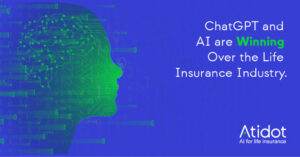As the insurance industry continues to evolve due to a pandemic and rapidly changing economic and regulatory conditions, the role of data scientists and actuaries has become increasingly important.
At a recent SOA conference, I had the good fortune to learn more about one particular InsurTech startup, Atidot, who focus on predictive models and insurance data analytics. Atidot brings together a team of data scientists and actuaries to develop models that are run with machine learning techniques.
In an interview with the Atidot Data Science Team, we discuss what it is like to work at an InsurTech, how data scientists and actuaries can collaborate, and look at some concrete technical examples where the innovation is having an impact. This article explores what collaboration can look like and how the role of a data scientist and actuary may evolve in the InsurTech industry in the future.
Culture and Vision
Questions focused on working in an innovative InsurTech startup.
Mark Spong (MS): What is it like to work at an InsurTech?
Atidot Data Science Team (ADST): Working for an InsurTech startup means we place innovation at the top of our minds. We balance our approach by considering that the insurance industry, specifically life insurance, is heavily regulated and has to follow strict compliance guidelines. — Alexia Bettan Jami, data scientist team lead
InsurTech often has a diverse international team; talents recruited from different parts of the world create a mixture of cultures, languages, and even work days. At Atidot, people attend meetings from Tel Aviv, London, New York, and Palo Alto daily. This generates a hectic agenda, but the flip side is that someone is always awake at the company 24/7. Working with an innovative InsurTech company means its projects are always strategic for the life carriers we work with. This drives encounters and the exchange of ideas and approaches with top executives, from the insurer CEO to the chief actuaries and chief data officers across the industry. It is thrilling to see the impact of AI models on forward-thinkers, and it’s even more exciting to be part of the transformation happening, especially in this economy that is driving new and inventive ways of generating more revenues from existing assets. — Sherry Chan, FSA, EA, MAAA, CSO, and an actuary
MS: What challenges do you face as an InsurTech startup that others may not expect?
ADST: The industry is known for being slow and needing help adapting to new techniques and has a lot of know-how built over the years. Part of the challenge is finding creative ways to incorporate this into our models. For example, you can learn from data that certain policies have a high lapse rate. But, when speaking to people in the industry, you understand that the new agents, in their first or second year, sometimes buy a few policies from the carrier to ensure they meet their quota. If they don’t survive in the industry, they lapse these policies, hence the high lapse rate. Examples like these are where we incorporate the know-how from actuaries to enhance the model. — Shimon Malka, data scientist
MS: You have both data scientists and actuaries. Who does what? How are the roles similar and different?
ADST: Actuaries and data scientists both work with data and try to predict the future. However, actuaries focus on the big numbers to identify the trends, where the game is heading, and what behaviors are trending. In contrast, data scientists focus on more nuanced numbers and examples to spot emerging new trends. It’s big numbers versus small examples. To accurately analyze small numbers, data scientists benefit from large quantities of data and sophisticated algorithms. If you give them superpowers with AI and Machine Learning capabilities, they can create better and much more advanced models that will detect and predict big and subtle patterns. This is why both roles are necessary and complementary. Actuaries, with their studies, identify the primary current that impacts how everything flows; data scientists identify the small currents to see where they are heading. — Shaked Markovitch, data scientist
Data science involves understanding statistics, domain data, and computer science. You need to use sophisticated computer science and development techniques to pick up that fine signal and have domain expertise to do it in a way that resonates with business units. At Atidot, actuaries help to understand domain expertise and identify the significant currents that matter to the business. At the same time, the data team focuses on analyzing the nuances in the data, and the development team ensures the software is scalable, reproducible, and can run in real-time. By incorporating actuarial insights into the process, data scientists can collect and analyze data to build statistical models, which can further improve over time with machine learning capabilities. — Alexia
MS: How do you see the role of data science/actuary evolving in the InsurTech industry in the future?
ADST: Data scientists continuously develop better and more intricate tools to collect and analyze the data. AI and predictive data analytics will reach the point where it’s transforming traditional industries as companies become more data-driven and produce meaningful insights, faster, and in a way that impacts customers. This is the direction towards which all verticals are converging.
The human/machine interaction between actuaries and machine learning algorithms will likely deepen over time, making strategic roles more heavily data-driven. This also implies a need for auditable and transparent AI-based insights, to ensure that actions taken based on such insights align and support the overall company goals and profitability. In other words, the human factor in an AI-driven world will become ever more significant, because decisions can’t be made by the algorithms themselves. That will differ between the best insurance companies. — Shimon
Another area of expertise that will be increasingly important for data scientists in InsurTech is data ethics. As data becomes more prevalent and valuable, companies must ensure they use data ethically and responsibly. This means being transparent about how data is collected, stored, and used. Additionally, data scientists in InsurTech will need to be able to communicate their findings and insights effectively to stakeholders, including executives, actuaries, and product managers. This means presenting complex data clearly and understandably, and using data to tell compelling stories that drive action and inform decision-making. — Sherry
MS: What makes Atidot unique from other InsurTech companies?
ADST: Atidot differentiates itself from other InsurTech companies by tackling problems that are typically difficult to overcome. While the industry focuses mainly on new business, Atidot recognizes the significance of in force and retention, which accounts for 90% of the industry. Aitdot’s platform has the ability to drive in-force behavior substantially. — Shaked
Atidot’s platform can provide behavioral insights to the carrier, allowing them to provide quality service to the average policyholder and offering personalized product recommendations. This allows customers to make informed decisions that benefit both people and the economy, thus pushing companies to provide better services. — Dror Katzav, data scientist, CEO and founder of Atidot
From an actuarial point of view, Atidot’s insights empower us to be better at our jobs by providing value and revealing data-driven insights that allow us to make more informed decisions and significantly impact organizations. — Sherry
Technical innovation
Questions focused on hot topics in the industry.
MS: What are your observations on current industry approaches to dynamic lapse behavior based on interest rates?
ADST: For many executives, the current rise in interest rates is a new experience, as the last time rates went up was over 30 years ago when many were not in the workforce. During this recession, people who buy policies with financial understanding behave differently than those who do not understand the economic situation. People who purchase products as an investment behave differently than those who face financial difficulty and decide every month which bills to pay. It is essential to consider their unique behaviors to deal with different populations effectively.
As a technique, we approach an interest rate increase like a decline. Individuals who understand the implications of interest rates will behave differently from those who do not. This change in interest rates can also impact the type of recommended products, such as annuities, where policies with guarantees below the market rate may experience lapse rates. Carriers must implement creative retention strategies, identify individuals who care about their policies and provide better service to retain assets. This is where technology can help insurance carriers address these challenges. — Alexia
MS: What did you keep in mind when modeling your data in the post-COVID era?
ADST: Generally, when using physical data, AI technology is very good at picking out micro currents and small trends that end up being significant trends. That’s why when COVID started, we knew what was happening because our technology captured most of the behavior in real time. In contrast, many actuaries and companies had to wait two to three years to fully understand what was happening. One thing to consider when building features for the model is that behavior pre- during- and post-COVID is different. While understanding pre-COVID behavior is essential, it must be taken with the caveat that it may not fully apply to the current situation. For example, one study found that agents in rural areas, where it was easier to get to the office, behaved differently from agents in the city center, whose offices were shut down. The policies sold by these two types of agents were also different. This behavior was unique to COVID and has since stopped now that offices are reopening. — Shimon
In conclusion, the evolving insurance industry demands a balance between data scientists and actuaries as we adopt new technology and business contexts shift. For many who think about what the actuarial team of the future looks like, perhaps this profile of one InsurTech startup gives you some concrete examples.
I’d like to thank the team at Atidot for their time and acknowledge how their application of advanced AI models in the insurance industry is notable, and incredibly relevant in an era where ChatGPT and AI models are starting to impact our daily lives.
Statements of fact and opinions expressed herein are those of the individual authors and are not necessarily those of the Society of Actuaries, the newsletter editors, or the respective authors’ employers.
Mark Spong, FSA, CERA, MAAA, is a senior manager with the Actuarial Practice of Oliver Wyman. He can be contacted at mark.spong@oliverwyman.com.
Dror Katzav can be contacted at dror@atidot.com.
Atidot Data Science Team—www.atidot.com


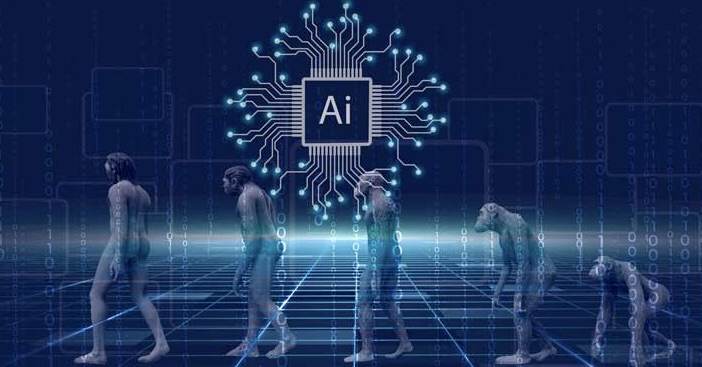
 min read
min read 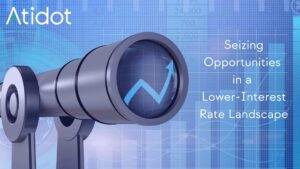
 min read
min read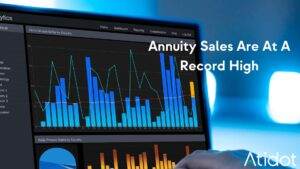
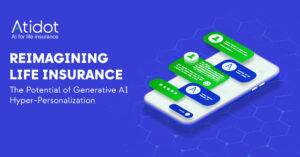
 min read
min read
